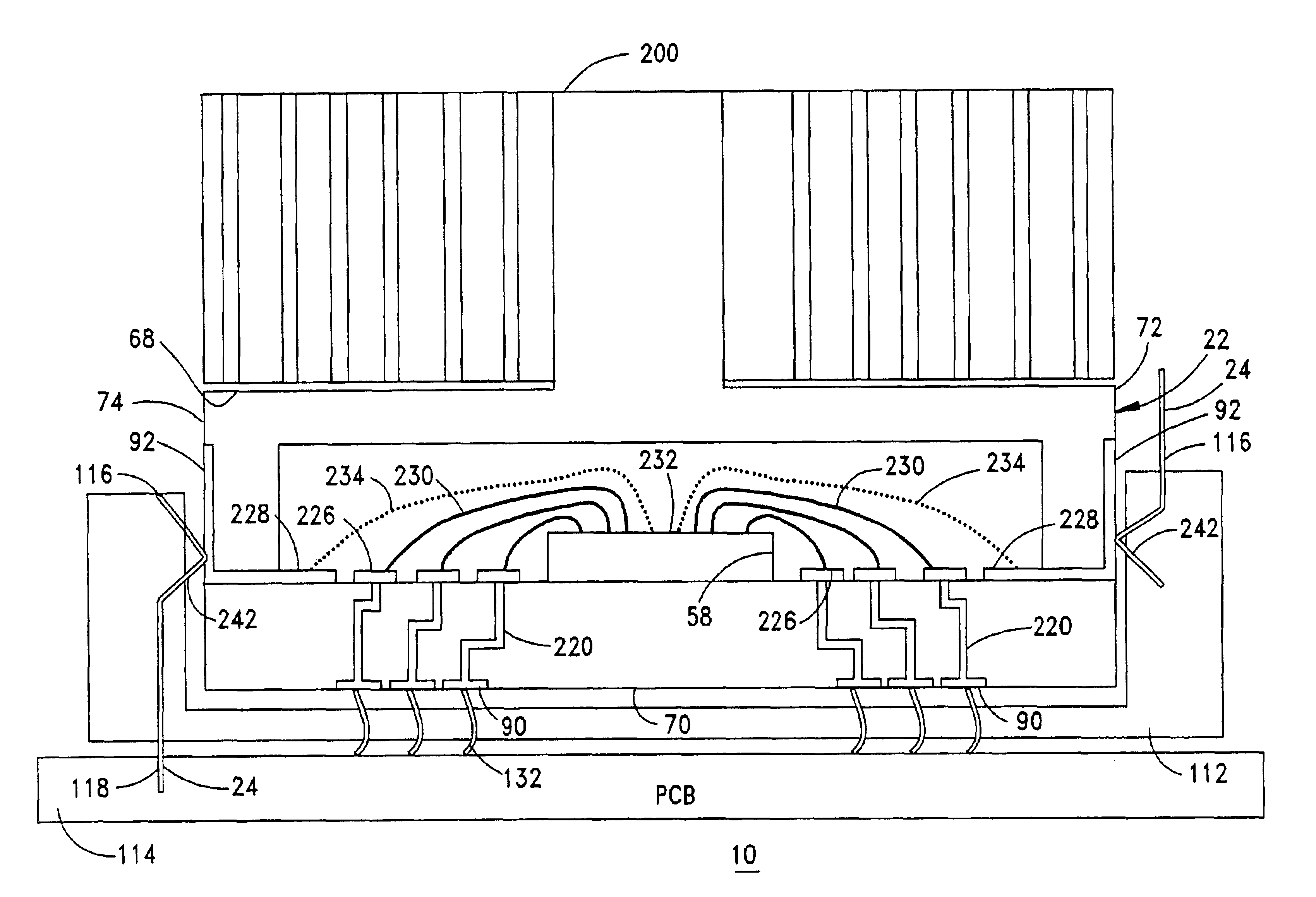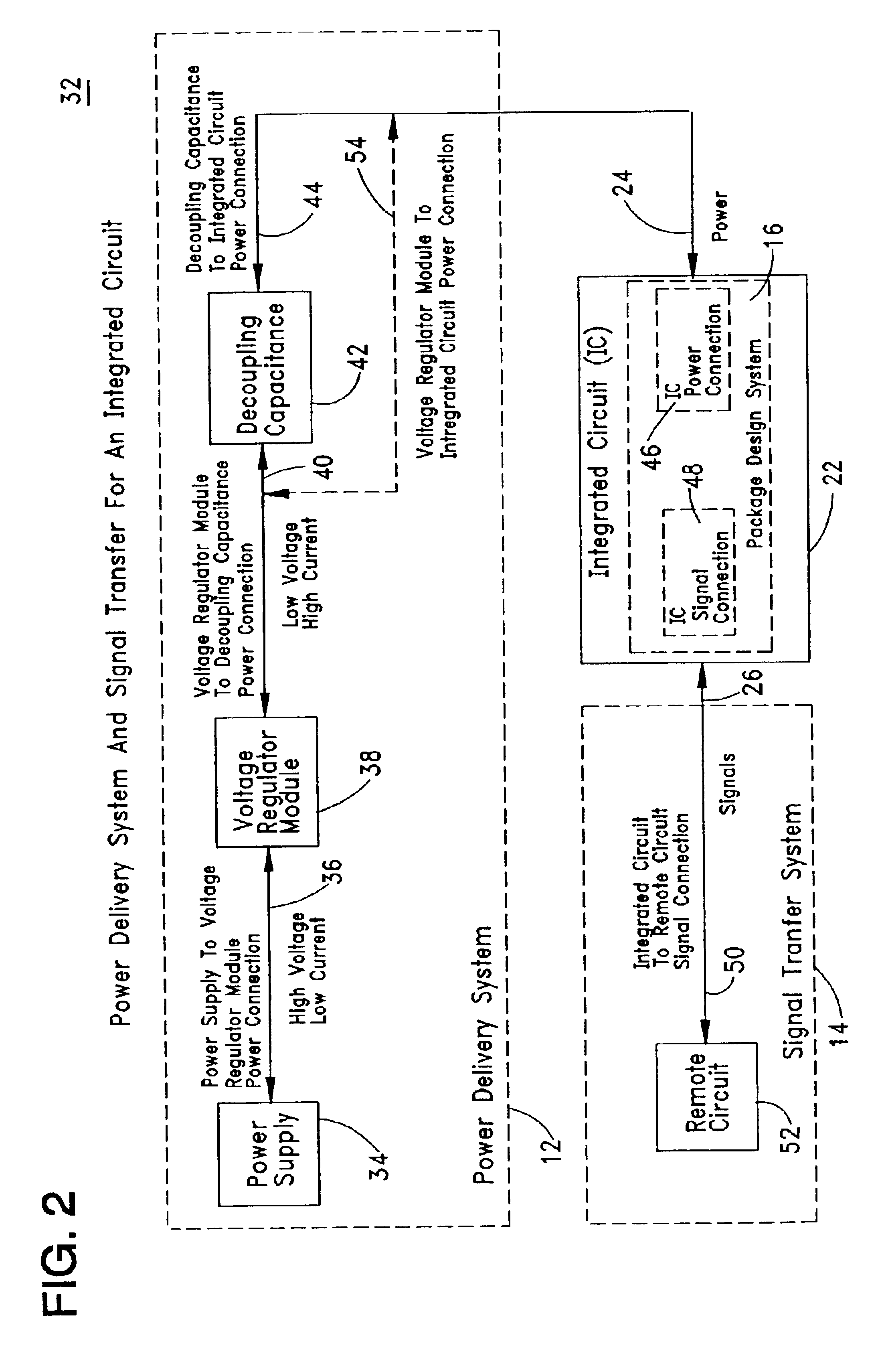Thermal management of power delivery systems for integrated circuits
a technology of thermal management and integrated circuits, applied in the direction of electrical apparatus construction details, printed circuit non-printed electric components association, coupling device connection, etc., can solve the problems of occupying valuable space, increasing the power consumption of microprocessors, and a more difficult central power supply to deliver high current and low voltage power. , to achieve the effect of less spa
- Summary
- Abstract
- Description
- Claims
- Application Information
AI Technical Summary
Benefits of technology
Problems solved by technology
Method used
Image
Examples
Embodiment Construction
The present invention is directed to an improved power delivery system 12, a signal transfer system 14, a package design system 16, a thermal management system 18, and an EMI control system 20 for an IC 22. Present and anticipated advancements in semiconductor technology have and will produce ICs, such as microprocessors, that have faster clock rates, higher power, lower supply voltages, higher DC currents, higher transient currents, narrower voltage margins, high non-uniform heat densities, and increased frequency EMI emissions. Ancillary benefits to these advancements include microprocessors that have increased interconnect densities and improved product manufacturability and reliability. Semiconductor manufacturers anticipate that near future microprocessors typically will require 1.0V or less operating voltage, 100A or greater current, 300 A / μsec or faster transient currents, voltage regulator efficiency greater than 90%, voltage regulation within 5% or less, and voltage ripple ...
PUM
 Login to View More
Login to View More Abstract
Description
Claims
Application Information
 Login to View More
Login to View More - R&D
- Intellectual Property
- Life Sciences
- Materials
- Tech Scout
- Unparalleled Data Quality
- Higher Quality Content
- 60% Fewer Hallucinations
Browse by: Latest US Patents, China's latest patents, Technical Efficacy Thesaurus, Application Domain, Technology Topic, Popular Technical Reports.
© 2025 PatSnap. All rights reserved.Legal|Privacy policy|Modern Slavery Act Transparency Statement|Sitemap|About US| Contact US: help@patsnap.com



